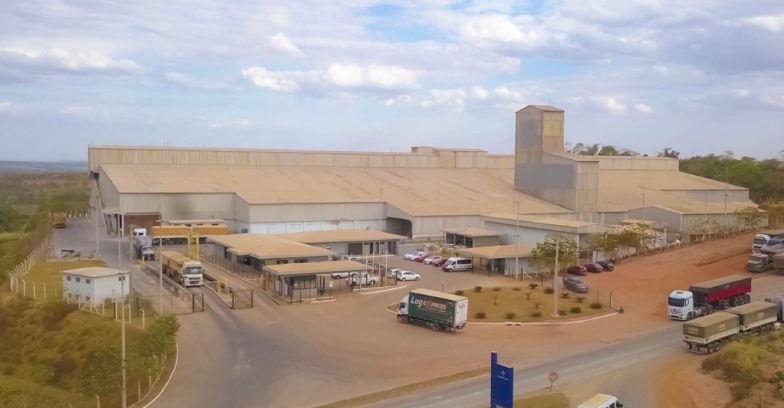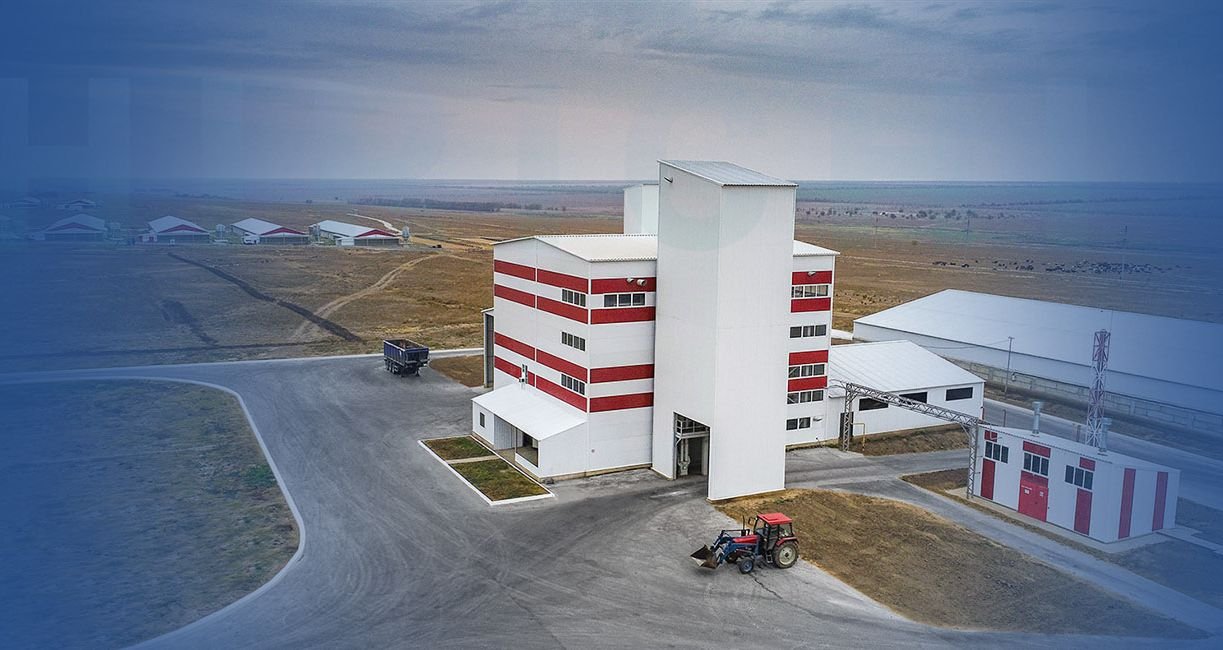In the ever-evolving landscape of animal agriculture, the demand for high-quality and nutritionally balanced feed has become paramount. As livestock and poultry operations strive to maximize productivity while ensuring animal health and welfare, compound feed mills have emerged as essential facilities, playing a pivotal role in meeting the nutritional needs of various animal species.
The Importance of Compound Feed
Compound feed, also known as complete feed or total mixed ration (TMR), is a carefully formulated blend of various ingredients designed to provide animals with the necessary nutrients for optimal growth, reproduction, and performance. The significance of compound feed extends beyond mere sustenance, as it contributes to:
- Improved Animal Health and Productivity: Balanced nutrition is crucial for maintaining animal health, promoting growth, and enhancing productivity, whether in meat, milk, or egg production.
- Efficient Resource Utilization: By combining various ingredients in precise proportions, compound feed maximizes the utilization of available resources, reducing waste and promoting sustainability.
- Consistent Quality: Compound feed mills ensure consistent quality and nutrient composition, minimizing variability and supporting predictable animal performance.
- Specialized Formulations: Compound feed can be tailored to meet the specific nutritional requirements of different animal species, life stages, and production goals, optimizing performance and efficiency.
- Biosecurity and Food Safety: Proper feed manufacturing practices and quality control measures implemented in compound feed mills contribute to enhanced biosecurity and food safety, protecting both animal and human health.
The Role of Compound Feed Mills
Compound feed mills are specialized facilities designed to manufacture high-quality compound feed for various livestock and poultry species. These mills play a crucial role in the animal production value chain, offering numerous benefits:
- Efficient Ingredient Handling and Processing: Compound feed mills are equipped with advanced systems for receiving, storing, and processing a wide range of raw materials, ensuring consistent quality and efficient utilization of resources.
- Precise Formulation and Mixing: Specialized equipment and computer-controlled systems enable precise formulation and homogeneous mixing of ingredients, ensuring that each batch of compound feed meets the desired nutritional specifications.
- Pelleting and Extrusion: Many compound feed mills incorporate pelleting and extrusion processes, which improve feed digestibility, reduce waste, and enhance handling and transportation efficiency.
- Quality Control and Testing: Rigorous quality control measures, including laboratory testing and analysis, are implemented to ensure that the final compound feed product meets stringent nutritional and safety standards.
- Automation and Process Optimization: Modern compound feed mills leverage automation and process optimization technologies to enhance efficiency, reduce labor costs, and minimize waste, contributing to overall cost-effectiveness and sustainability.
- Customization and Flexibility: Compound feed mills can adapt to changing market demands and customer requirements, offering customized formulations and flexible production capabilities to meet diverse animal production needs.
Related post: https://www.richipelletmachine.com/pet-feed-mill/
Key Components of a Compound Feed Mill
A successful compound feed mill operation requires the integration of various components to ensure efficient and sustainable production. The key components of a typical compound feed mill include:
- Raw Material Handling and Storage: Facilities for receiving, storing, and handling raw materials such as grains, oilseeds, protein sources, vitamins, and minerals are essential for ensuring a consistent supply of high-quality ingredients.
- Grinding and Mixing: Advanced grinding and mixing equipment is necessary to achieve the desired particle size and homogeneous distribution of ingredients in the compound feed formulation.
- Pelleting and Extrusion: Pelleting and extrusion systems are crucial for producing high-quality, durable feed pellets or extruded products that can withstand handling, storage, and transportation without compromising nutritional value.
- Drying and Cooling: Efficient drying and cooling systems are required to remove excess moisture from the compound feed products, ensuring their stability and prolonging their shelf life.
- Quality Control and Testing: Comprehensive quality control measures, including laboratory testing and analysis, are essential to ensure that the final compound feed product meets stringent nutritional and safety standards.
- Packaging and Storage: Appropriate packaging and storage facilities are necessary to maintain the quality and integrity of the compound feed during transportation and distribution.
- Automation and Process Control: Advanced automation and process control systems are integrated into compound feed mills to ensure consistent product quality, maximize efficiency, and minimize downtime.
- Auxiliary Systems: Compound feed mills also require auxiliary systems such as material handling equipment, dust collection systems, process control systems, and utilities to ensure efficient and safe operations.
Factors Influencing Compound Feed Mill Success
The success of a compound feed mill operation is influenced by several critical factors, including:
- Raw Material Sourcing and Supply Chain Management: Securing a reliable and cost-effective supply of high-quality raw materials is crucial for consistent compound feed production and profitability.
- Formulation Expertise: Employing skilled nutritionists and feed formulators is essential to develop balanced and optimized compound feed formulations that meet the specific nutritional requirements of various animal species and production goals.
- Technology and Automation: Investing in advanced technologies and automation systems can enhance production efficiency, reduce labor costs, and improve product quality and consistency.
- Energy Efficiency and Sustainability: Incorporating energy-efficient technologies and sustainable practices, such as waste reduction strategies and renewable energy sources, can reduce operational costs and minimize the environmental impact of the compound feed mill.
- Regulatory Compliance: Ensuring compliance with relevant regulations and standards related to feed safety, quality, and environmental protection is essential for the long-term viability of the compound feed mill operation.
- Skilled Workforce and Training: Employing a skilled and well-trained workforce is crucial for the efficient operation and maintenance of the compound feed mill facility, ensuring optimal performance and minimizing human errors.
- Continuous Improvement: Implementing a culture of continuous improvement, including regular equipment upgrades, process refinements, and the adoption of new technologies, can drive long-term efficiency gains and maintain competitiveness in the compound feed market.
Opportunities and Future Outlook
As the global demand for animal-based products continues to rise, the compound feed industry is poised for significant growth, creating numerous opportunities for compound feed mills. The future outlook for this sector is promising, driven by factors such as:
- Increasing Livestock and Poultry Production: The growing global population and rising demand for animal-based proteins are expected to drive the expansion of livestock and poultry operations, consequently increasing the demand for high-quality compound feed.
- Technological Advancements: Ongoing research and development in areas such as feed formulation, ingredient optimization, and production processes will contribute to the development of more efficient and sustainable compound feed products.
- Sustainable Practices: The adoption of sustainable practices, such as the use of alternative protein sources, waste reduction strategies, and renewable energy sources, will become increasingly important in the compound feed industry.
- Precision Animal Farming: The integration of precision animal farming techniques, including individualized feeding strategies and real-time monitoring, will drive the need for specialized compound feed formulations tailored to specific production systems and animal requirements.
- International Collaboration and Investment: Increased international collaboration and investment in the animal production sector will drive the development of new compound feed mills, fostering economic growth and technological advancements.
In conclusion, compound feed mills play a crucial role in supporting the growth and sustainability of the animal production industry. By investing in these specialized facilities, stakeholders can contribute to meeting the rising global demand for animal-based products while promoting sustainable practices and economic development. As the world continues to recognize the importance of efficient and responsible animal production, compound feed mills will remain at the forefront of this vital industry, fueling its growth and driving innovation for a more sustainable future.
For details please contact: Richi Machinery
WhatsApp:86 138 3838 9622
Email:enquiry@richipelletmachine.com










